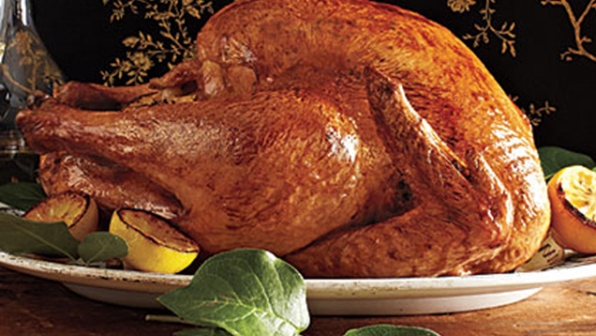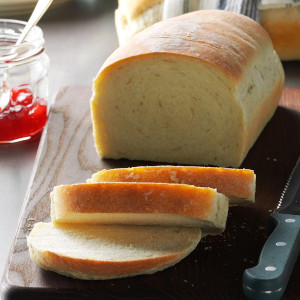The man from the home renovation company was cheerful and engaging. He was here to talk about replacing some of my old windows and doors with new, more energy efficient ones. But something about his gregarious nature led us to talk about life paths… And we ended up discussing the FFB!
 The perfect Roast Turkey: Juicy and tender on the inside,
The perfect Roast Turkey: Juicy and tender on the inside,
crispy, flavourful Skin on the outside…
Turns out that, in his adventurous youth, Brian was a commercial baker and a bakery trainer for a large store chain. We traded stories about the biz, and he admitted that he’s still an avid baker and home cook.
“My sister wanted to know the difference between Baking and Roasting,” he mentioned casually, at one point. “You have anything on your blog about that?”
I admitted I did not. Though I had posted a rundown of the standard, classic cooking techniques and what they entailed. It was part of my series on Essential Cooking Techniques.
Here, now, is my dissertation on Baking vs. Roasting…
Dry Heat
Dry Heat cooking is just what it says: transmission of heat to food without the use of Water in any form. Baking and Roasting share some of the same characteristics, but differ in their fundamental goals. They are both Dry Heat cooking methods, but they work in very different ways. Roasting and Baking both take place in the oven, but that’s about as far as the characteristics they share in common go.
Roasting
When you cook a Roast of Beef or Ham, or a Chicken or a Turkey, you’re aiming to cook it through on the inside without overcooking it on the outside. An essential point here is that you want the interior to be properly cooked but not dry and tough. In fact, you usually want the interior to come out steaming, juicy and tender.
Roasting usually takes place at temperatures from 325 F to 375 F, depending on what you’re cooking and how large it is. Larger, denser Roasts are usually cooked longer at a lower temperature to ensure that the outside is not overdone before the thickest part of the cut is properly done. I always tell people to use a meat thermometer to check internal temperature and confirm doneness. Roasting by cooking time per lb. / Kg alone is never accurate.
Roasting is usually performed in an open pan, but many folks like to cook their Roasts partway through with the pan covered, then remove the cover for the final third or so of cooking time to let a golden, crispy, caramelized crust or skin form. (See picture, above.) This adds to the great Umami Roast Meat flavour that develops during cooking in the presence of Salt and Pepper and your choice of Herbs and Spices.
Baking
Baking is not as old a technique as Roasting. Early humans were cooking Meat over campfires long before they started gathering Grains and making Bread.
Think, for a moment, about what Breads, Cakes, Cookies and Muffins, Pancakes and Waffles and other foods that originate as Doughs or Batters share in common… They usually rise while cooking, have moist, fluffy interiors and often develop crispy top Crusts. (See picture, top of page.)
Unlike Roasting, Baking seeks to drive off moisture from the product while heating and expanding the CO2 gas bubbles produced during preparation of the Dough or Batter by either Yeast action or a Baking Soda reaction. The expanding gas bubbles are what produce the rise in Baked Goods. In Short Pastries, it’s moisture in the little pockets of Butter in the Dough that burst into steam during Baking that produce that wonderful, light flaky texture.
Baking is commonly performed in open pans or on sheet pans, or directly on stone oven beds, and takes place at higher temperatures than Roasting – from 350 F to 425 F, or even 450 F, depending on what you’re making. Most traditional brick Pizza ovens operate at temperatures from 600 F to 900 F.
Now you know…
There’s more to Roasting and Baking than meets the untrained eye, and a little magic thrown in as well!
~ Maggie J.

